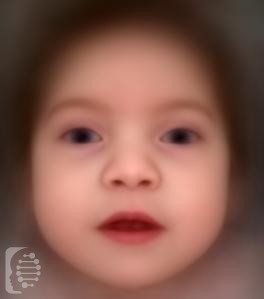What is Bohring-Opitz syndrome?
Bohring-Opitz syndrome is a rare disease which affects multiple parts of the body.
It is mainly characterized by intrauterine growth restriction and failure to thrive following birth.
A port wine stain on the face (nevus flammeus of the face) is also a defining feature of this rare disease.
To date there are just 60 cases recorded globally.
This syndrome is also known as:
Bohring Syndrome; C-like Syndrome; Opitz Trigonocephaly-like Syndrome
What gene change causes Bohring-Opitz syndrome?
The syndrome is caused by mutations in the ASXL1 gene.
The condition is usually the result of a de novo mutation. Individuals with Bohring-Opitz syndrome have not been known to have children of their own.
In some cases, a genetic syndrome may be the result of a de-novo mutation and the first case in a family. In this case, this is a new gene mutation which occurs during the reproductive process.
What are the main symptoms of Bohring-Opitz syndrome?
The main initial symptom of the syndrome includes intrauterine growth restriction. The syndrome presents with a wide variety of symptoms affecting the mental and physical development of an individual.
Developmental delay and severe intellectual disability as well as possible brain malformations are serious symptoms of the condition.
Facial and physical characteristics include a very small head, a red birthmark on the face, widely-spaced eyes, corners of the eyes that point up, protruding eyes, strabismus, high myopia, cleft palate and low set ears rotated backward.
Other unique facial characteristics include a flat nasal bridge, nostrils that open to the front, and a characteristic posture that includes slouching shoulders and bent elbows and wrists. Excessive hair growth and low muscle tone are other physical symptoms of the syndrome.
Other health conditions may include seizures, poor feeding and failure to thrive, sleep apnea, heart, kidney, and genital abnormalities. Some individuals develop Wilms tumor, a rare kidney cancer in children. Most individuals with Bohring-Opitz syndrome have a shortened life expectancy.
Possible clinical traits/features:
Long face, Low-set ears, Low anterior hairline, Tapered finger, Low-set, posteriorly rotated ears, Nevus flammeus, Narrow palate, Narrow chest, Narrow forehead, Myopia, Micrognathia, Muscular hypotonia, Intellectual disability, profound, Intestinal malrotation, Intrauterine growth retardation, Gastroesophageal reflux, Full cheeks, Short toe, Underdeveloped supraorbital ridges, Hypoplasia of the brainstem, Short foot, Hirsutism, Gray matter heterotopia, Hernia of the abdominal wall, Hyperechogenic pancreas, Hypoplasia of the corpus callosum, Global developmental delay, Cognitive impairment, Hearing impairment, Hypertelorism, Camptodactyly, Ulnar deviation of finger, Delayed peripheral myelination, Short thorax, Talipes, Microcephaly, Thick hair, Wide intermamillary distance, Mesomelic/rhizomelic limb shortening, Prominent metopic ridge, Proptosis, Camptodactyly of finger, Prominent forehead, Strabismus, Upslanted palpebral fissure, Synophrys, Supernumerary nipple, Ulnar deviation of the wrist.
How is it diagnosed?
To find out if someone has a diagnosis of Bohring-Opitz syndrome, it is important to have a consultation and evaluation with a clinical genetic specialist. Specialists may also suggest specific genetic testing or other types of tests to help reach a diagnosis. FDNA’s AI technology can help speed up the diagnostic process by analyzing facial features and other health information.

